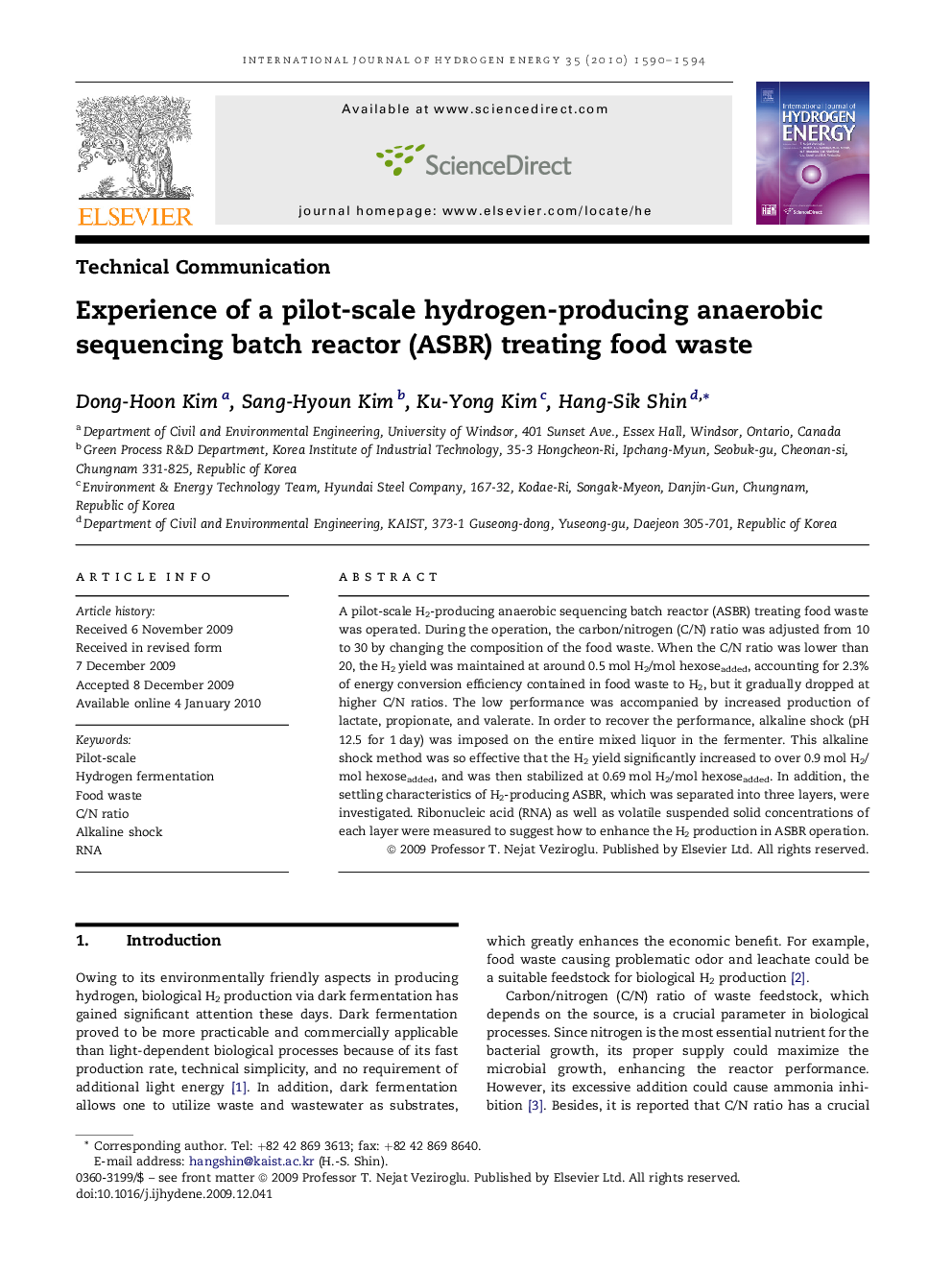| Article ID | Journal | Published Year | Pages | File Type |
|---|---|---|---|---|
| 1273373 | International Journal of Hydrogen Energy | 2010 | 5 Pages |
A pilot-scale H2-producing anaerobic sequencing batch reactor (ASBR) treating food waste was operated. During the operation, the carbon/nitrogen (C/N) ratio was adjusted from 10 to 30 by changing the composition of the food waste. When the C/N ratio was lower than 20, the H2 yield was maintained at around 0.5 mol H2/mol hexoseadded, accounting for 2.3% of energy conversion efficiency contained in food waste to H2, but it gradually dropped at higher C/N ratios. The low performance was accompanied by increased production of lactate, propionate, and valerate. In order to recover the performance, alkaline shock (pH 12.5 for 1 day) was imposed on the entire mixed liquor in the fermenter. This alkaline shock method was so effective that the H2 yield significantly increased to over 0.9 mol H2/mol hexoseadded, and was then stabilized at 0.69 mol H2/mol hexoseadded. In addition, the settling characteristics of H2-producing ASBR, which was separated into three layers, were investigated. Ribonucleic acid (RNA) as well as volatile suspended solid concentrations of each layer were measured to suggest how to enhance the H2 production in ASBR operation.
